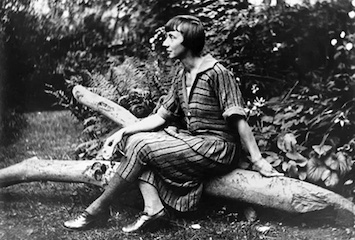
Hannah Höch (1889 – 1978). A German artist and a pioneering figure in the Dada movement, best known for her innovative work in photomontage. Höch’s art challenged societal norms, particularly gender roles and political structures, through her bold and satirical compositions. She is regarded as one of the most influential female artists of the 20th century.
Early Life
Born in Gotha, Germany, Höch studied at the School of Applied Arts in Berlin from 1912 to 1914, focusing on glass design and graphic arts. Her education was interrupted by World War I, during which she worked for the Red Cross. After the war, she resumed her studies at the National Institute of Arts and Crafts, where she became immersed in the avant-garde art scene.
Career and the Dada Movement
Höch joined the Berlin Dada group in 1917, a collective of artists reacting to the chaos of World War I with absurdity and anti-establishment works. She developed her signature photomontage technique—cutting and recombining images from mass media, such as magazines and newspapers—to critique consumerism, politics, and traditional femininity. Her most famous piece, Cut with the Kitchen Knife Dada Through the Last Weimar Beer-Belly Cultural Epoch in Germany (1919–1920), is a sprawling, chaotic collage that skewers German society and the Weimar Republic.
Despite her talent, Höch faced marginalization within the male-dominated Dada circle. Her relationship with artist Raoul Hausmann further complicated her position, though it also inspired some of her work exploring power dynamics and identity.
Later Work and Legacy
After Dada’s decline in the 1920s, Höch continued to experiment with abstraction and surrealism, incorporating softer, more organic forms into her collages. During the Nazi era, her work was labeled “degenerate art,” forcing her to live and create in relative obscurity. She re-emerged after World War II, gaining recognition in her later years as a feminist icon and artistic innovator.
Höch died in Berlin in 1978. Her work remains celebrated for its wit, technical skill, and prescient commentary on gender and media. Major retrospectives of her art have been held at institutions like the Museum of Modern Art (MoMA) and the Berlinische Galerie.
Personal Life
Höch was openly bisexual, maintaining significant relationships with both men and women, including Dutch writer Til Brugman. Her personal experiences often informed her art, particularly her explorations of autonomy and societal expectations.
Key Works
- Cut with the Kitchen Knife Dada Through the Last Weimar Beer-Belly Cultural Epoch in Germany (1919–1920)
- The Beautiful Girl (1920)
- From an Ethnographic Museum series (1920s)
Influence
Höch’s pioneering use of photomontage influenced later movements like Pop Art and contemporary feminist art. Her legacy endures as a testament to the power of collage as a medium for social critique.